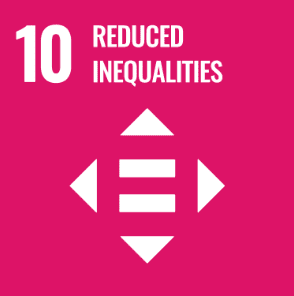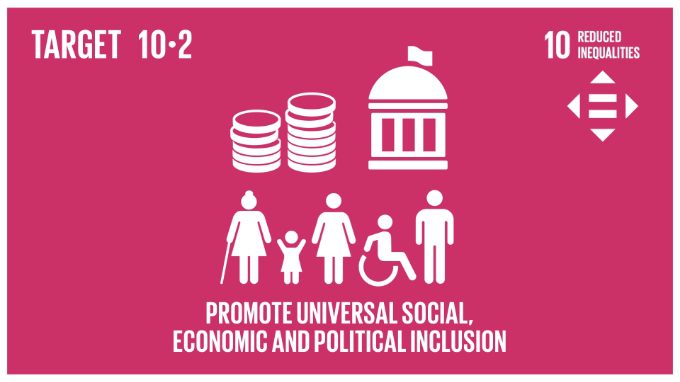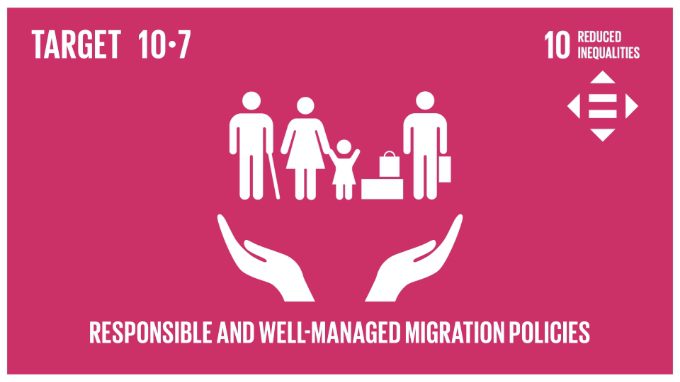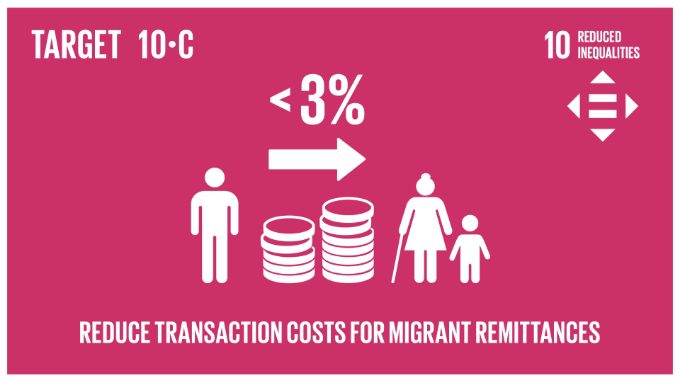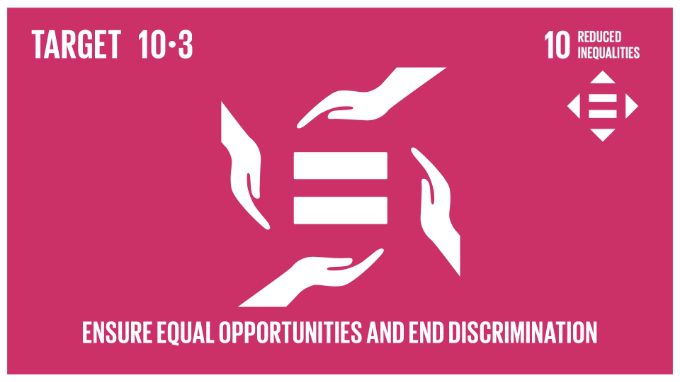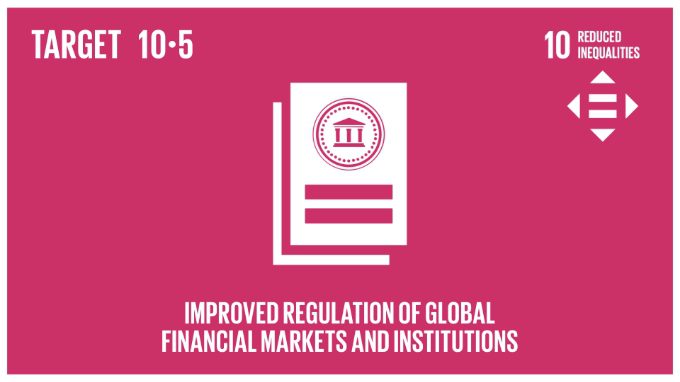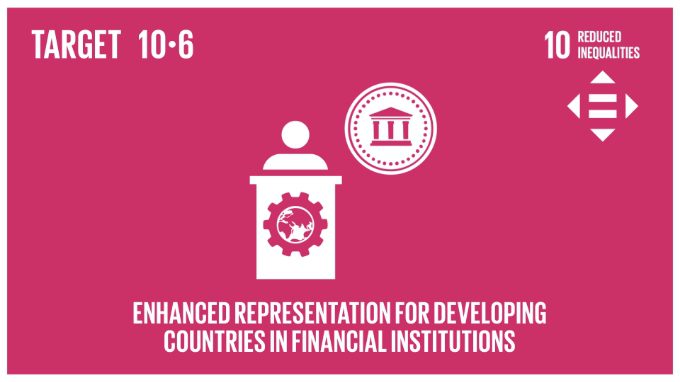Overview:
Too much of the world’s wealth is held by a very small group of people.This often leads to financial and social discrimination. In order for nations to flourish, equality and prosperity must be available to everyone – regardless of gender, race, religious beliefs or economic status. When every individual is self-sufficient, the entire world prospers.

International Progress 2023:
Before the pandemic, the incomes of the bottom 40% of the population grew faster than the national average in a majority of countries. The impacts of the pandemic and uneven recoveries in different regions of the world threaten to reverse that trend and further worsen global inequality.
Record numbers are being forced to flee conflicts and economic hardship. By mid-2022, one in 251 people worldwide was a refugee, the highest proportion ever documented. Achieving SDG 10 requires concerted efforts to address the root causes of wage disparities and access to resources both within- and between-country inequality.
Targets —
-

Target 10.1
Across 119 countries with data available prior to the pandemic, more than half of them have achieved income growth of the bottom 40% of the population at a rate higher than the national average. Sparse data from the pandemic suggest that two-thirds of 50 countries have experienced shared prosperity post-2019, driven by Northern America and Europe where in many countries, transfers mitigated the economic impacts of the pandemic on the bottom of distributions.
-

Target 10.2
For the 53 countries with information in 2015 and 2020, on average, the share of people living below half the median has declined by 1 percentage point, from 13.4% to 12.5%. This trend continued during COVID-19, in large part because of generous social assistance programs implemented in several countries. Yet the share living below half the median remains worryingly high in many countries: In 17 countries, more than 20% of the population lives below half the
national median. -

Target 10.4
The share of economic output earned by workers has experienced a sizeable decline in the last 15 years, from 54.1% in 2004 to 52.6% in 2019. This decline represents $590 (PPP) per worker on average. As earnings from work are particularly important for the less well-off and vulnerable, and as lower-income workers have been disproportionately impacted by the crisis, the observed decline is disconcerting.
-

Target 10.7
IOM’s Missing Migrants Project has recorded 54,127 deaths on migratory routes worldwide since 2015, of which 6,878 were recorded in 2022. However, the real number of lives lost is certainly higher.
The number of people displaced from their countries due to war, conflict, persecution, human rights violations, and public disorder has increased annually for over a decade. By mid-2022 there were 32.5 million refugees worldwide, among 103 million forcibly displaced persons. By the same time, the ratio of refugees to every 100,000 people has risen to 398, an 87% increase from 2015, as forced displacement continues to rise.
Globally, in 2021, 63% of 138 countries with data reported having a wide range of policies to facilitate orderly, safe, regular and responsible migration and mobility of people, defined as having policy measures for 80% or more of the 30 sub-categories under the six domains of the indicator. -

Target 10.c
The global average cost of sending $200 in remittances decreased from 9.3% in 2011, to 7.42% in 2016 and 6.3% in 2021, which remains more than twice the SDG 10.c target of 3%.
Ireland’s
Progress 2023:
According to the Survey on Income and Living Conditions 2022, the richest 20% of persons had 4 times the income of the poorest 20%, increasing from 3.8 times in 2021. A Gini coefficient value of 0% denotes perfect equality, indicating that income is distributed equally amongst all persons. A Gini Coefficient of 100% would denote perfect inequality where all the income is held by one person. In 2022, the Gini Coefficient in Ireland was 28%, up from 27% in 2021.
The current cumulative rich-poor gap, that is the difference in disposable income after tax between somebody earning over €100,000 and a single person on jobseeker’s benefit is €960. For the first time in a decade, the rich-poor gap decreased as a result of Budget 2024. However, as Social Justice Ireland points out, this is only due to the temporary measures, and so the gap will increase again next year if the temporary measures are removed and long-term structural measures to reduce inequality are not introduced.
Targets —
-

By 2030, progressively achieve and sustain income growth of the bottom 40 per cent of the population at a rate higher than the national average.
CSO data
Claim: Achieving
10.1.1 The median nominal household disposable income in 2019 was €43,552, compared with €42,865 in 2018. The mean household disposable income in 2019 was €53,118 compared with €51,458 in 2018. Note this does not provide the income per capita of the bottom 40% of the population.
10.1.1
Growth rates of household expenditure or income per capita among the bottom 40 per cent of the population and the total population
-

By 2030, empower and promote the social, economic and political inclusion of all, irrespective of age, sex, disability, race, ethnicity, origin, religion or economic or other status.
CSO data
Status: Challenges for the unemployed and retired
10.2.1 The median for nominal equivalised disposable income in 2019 was €23,979 and the nominal at risk of poverty threshold stood at €14,387, i.e. 60% of the median. In 2019 retired people had a median for nominal equivalised disposable income of €20,420, while for unemployed people it was €16297. This is not disaggregated by age, sex and persons with disabilities.
10.2.1
Proportion of people living below 50 per cent of median income, disaggregated by age, sex and persons with disabilities
-

Ensure equal opportunity and reduce inequalities of outcome, including by eliminating discriminatory laws, policies and practices and promoting appropriate legislation, policies and action in this regard.
CSO data
Status: Challenges identified
10.3.1 In 2019 just under one in five (18%) people aged 18 or over said they felt discriminated against in the two years before the interview and 33.2% of persons identifying as LGBTI+ had experienced discrimination in the past 2 years.
10.3.1
Proportion of population reporting having personally felt discriminated against or harassed within the previous 12 months on the basis of a ground of discrimination prohibited under international human rights law
-

Adopt policies, especially fiscal, wage and social protection policies, and progressively achieve greater equality. Adopt policies, especially fiscal, wage and social protection policies, and progressively achieve greater equality.
CSO data
Status: Gini Coefficient not reducing
10.4.1 The labour share, (the total compensation of employees and the labour income of the self-employed), as a percentage of GDP fell from 33.5% in 2016 to 29.3% in 2020. Over this time period, the labour share as a percentage of modified gross national income increased slightly from 51.7% to 52.5%
10.4.2 In 2019, the ‘at risk of poverty’ rate was 12.8% compared with 14% in 2018. In 2019, 17.8% of the population were defined as living in enforced deprivation, i.e. they experienced two or more of the eleven types of deprivation. This compares with 15.1% in 2018 and a high of 30.5% in 2013. The decrease in the enforced deprivation rate between 2018 and 2019 was statistically significant. In 2019 the Gini coefficient was 28.8% compared with 29.7% in 2018. This decrease is not statistically significant. The general downward trend since 2014 indicates a decrease in income inequality across the total income distribution.
10.4.1
Labour share of GDP
10.4.2
Redistributive impact of fiscal policy
-

Improve the regulation and monitoring of global financial markets and institutions and strengthen the implementation of such regulations.
CSO Data
Claim: Achieving
10.5.1 Non-performing loans as a percentage of total gross loans fell from 11.46% in 2017 to 3.36% in 2019. The return on assets fell from 0.85 in 2017 to 0.70 in 2019. The ratio of regulatory capital to assets fell slightly from 14.35 in 2017 to 13.47 in 2019.
10.5.1
Financial Soundness Indicators
-

Ensure enhanced representation and voice for developing countries in decision-making in global international economic and financial institutions in order to deliver more effective, credible, accountable and legitimate institutions.
CSO data
Claim: Achieving
10.6.1 Ireland has Voting Rights in several International Organisations.
10.6.1
Proportion of members and voting rights of developing countries in international organizations
-

Facilitate orderly, safe, regular and responsible migration and mobility of people, including through the implementation of planned and well-managed migration policies.
CSO data
Claim: Achieving
10.7.1 A total of €7.3 million has been awarded for migrant integration and employability projects to run from 2017 to 2020.
10.7.2 The Migrant Integration Strategy 2017-2020 was adopted by Government and launched in February 2017.
10.7.3 No data provided
10.7.4 There were 15,779 refugees living in Ireland in 2019.
10.7.1
Recruitment cost borne by employee as a proportion of monthly income earned in country of destination
10.7.2
Number of countries with migration policies that facilitate orderly, safe, regular and responsible migration and mobility of people
10.7.3
Number of people who died or disappeared in the process of migration towards an international destination
10.7.4
Proportion of the population who are refugees, by country of origin
-

Implement the principle of special and differential treatment for developing countries, in particular least developed countries, in accordance with World Trade Organization agreements.
CSO data
Claim: Achieving
10.a.1 At present, the EU has in place the largest trade network in the world, with over 40 individual agreements with countries and regions. These agreements facilitate the trade of products and services between the EU and its outside partners.
10.a.1
Proportion of tariff lines applied to imports from least developed countries and developing countries with zero-tariff
-

Encourage official development assistance and financial flows, including foreign direct investment, to States where the need is greatest, in particular least developed countries, African countries, small island developing States and landlocked developing countries, in accordance with their national plans and programmes.
CSO data
Claim: Achieving
10.b.1 ODA at current prices was €870 million in 2019, an annual increase of 9.9%.
10.b.1
Total resource flows for development, by recipient and donor countries and type of flow (e.g. official development assistance, foreign direct investment and other flows)
-

By 2030, reduce to less than 3 per cent the transaction costs of migrant remittances and eliminate remittance corridors with costs higher than 5 per cent.
CSO data
Status: Costs are reducing
10.c.1 Remittance Prices Worldwide Quarterly report (RPW) showed that the Global Average recorded a decrease from 6.75% in Q3 2020 to 6.51% in Q4 2020.
10.c.1
Remittance costs as a percentage of the amount remitted


